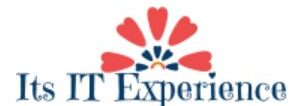Network Access Methods
There are various methods of managing access to a network. If all network stations tried to talk at once, the messages would become unintelligible, and no communication could occur. Therefore a method of being sure that stations coordinate the sending of messages must be achieved. There are several methods listed below which have various advantages and disadvantages.
· Contention
- Carrier-Sense Multiple Access with Collision Detection (CSMA/CD) – Used by Ethernet
- Carrier-Sense Multiple Access with Collision Avoidance (CSMA/CA)
· Token Passing – A token is passed from one computer to another, which provides transmission permission.
· Demand Priority – Describes a method where intelligent hubs control data transmission. A computer will send a demand signal to the hub indicating that it wants to transmit. The hub sill respond with an acknowledgement that will allow the computer to transmit. The hub will allow computers to transmit in turn. An example of a demand priority network is 100VG-AnyLAN (IEEE 802.12). It uses a star-bus topology.
· Polling – A central controller, also called the primary device will poll computers, called secondary devices, to find out if they have data to transmit. Of so the central controller will allow them to transmit for a limited time, then the next device is polled. Token passing performs better when the network has a lot of traffic, while Ethernet which uses CSMA/CD is generally faster but loses performance when the network has a lot of traffic. CSMA/CD is basically a method that allows network stations to transmit any time they want. They, however, sense the network line and detect if another station has transmitted at the same time they did. This is called a collision. If a collision happened, the stations involved will retransmit at a later, randomly set time in hopes of avoiding another collision.
IP to link layer encapsulation
The requirements for IP to link layer encapsulation for hosts on a Ethernet network are:
· All hosts must be able to send and receive packets defined by RFC 894.
· All hosts should be able to receive a mix of packets defined by RFC 894 and RFC 1042.
· All hosts may be able to send RDC 1042 defined packets.
Hosts that support both must provide a means to configure the type of packet sent and the default must be packets defined by RFC 894.
Ethernet and IEEE 802 Encapsulation formats
Ethernet (RFC 894) message format consists of:
1. 6 bytes of destination address.
2. 6 bytes of source address.
3. 2 bytes of message type which indicates the type of data being sent.
4. 46 to 1500 bytes of data.
5. 4 bytes of cyclic redundancy check (CRC) information.
IEEE 802 (RFC 1042) Message format consists of 3 sections plus data and CRC as follows:
1. 802.3 Media Access Control section used to coordinate the sending of data between computers.
- 6 bytes of destination address.
- 6 bytes of source address.
- 2 bytes of length – The number of bytes that follow not including the CRC.
2. 802.2 Logical Link control establishes service access points (SAPs) between computers.
- 1 byte destination service access point (DSAP).
- 1 byte source service access point (SSAP).
- 1 byte of control.
3. Sub Network Access Protocol (SNAP).
- 3 bytes of org code.
- 2 bytes of message type which indicates the type of data being sent.
4. 38 to 1492 bytes of data.
5. 4 bytes of cyclic redundancy check (CRC) information.
Some Ethernet message types include:
· 0800 – IP datagram with length of 38 to 1492 bytes.
· 0806 – ARP request or reply with 28 bytes and pad bytes that are used to make the frame long enough for the minimum length.
· 8035 – RARP request or reply of 28 bytes and pad bytes that are used to make the frame long enough for the minimum length.
These message types are the same for both formats above with the exception of the pad bytes. The pad bytes for the RFC 894 and RFC 1042 datagrams are of different lengths between the two message formats because the RFC 894 minimum message length is 46 bytes and the RFC 1042 minimum message length is 38 bytes. Also the two message formats above are distinguishable from each other. This is because the RFC 894 possible length values are exclusive of RFC 1042 possible type values.
Trailor Encapsulation
This is described in RFC 1122 and RFC 892, but this scheme is not used very often today. The trailer protocol [LINK:1] is a link-layer encapsulation method that rearranges the data contents of packets sent on the physical network. It may be used but only after it is verified that both the sending and receiving hosts support trailers. The verification is done for each host that is communicated with. RFC 1122 states: “Only packets with specific size attributes are encapsulated using trailers, and typically only a small fraction of the packets being exchanged have these attributes. Thus, if a system using trailers exchanges packets with a system that does not, some packets disappear into a black hole while others are delivered successfully.”
Trailer negotiation is performed when ARP is used to discover the media access control (MAC) address of the destination host. RFC 1122 states: “a host that wants to speak trailers will send an additional “trailer ARP reply” packet, i.e., an ARP reply that specifies the trailer encapsulation protocol type but otherwise has the format of a normal ARP reply. If a host configured to use trailers receives a trailer ARP reply message from a remote machine, it can add that machine to the list of machines that understand trailers, e.g., by marking the corresponding entry in the ARP cache.”
